Two Papers Have Been Accepted to CLOSER 2018 -
A Model-based Architecture for Autonomic and Heterogeneous Cloud Systems
By Hugo Bruneliere, Zakarea Al-Shara, Frederico Alvares, Jonathan Lejeune and Thomas Ledoux
Over the last few years, Autonomic Computing has been a key enabler for Cloud system’s dynamic adaptation. However, autonomously managing complex systems (such as in the Cloud context) is not trivial and may quickly become fastidious and error-prone. We advocate that Cloud artifacts, regardless of the layer carrying them, share many common characteristics.
Thus, this makes it possible to specify, (re)configure and monitor them in an homogeneous way. To this end, we propose a generic model-based architecture for allowing the autonomic management of any Cloud system. From a “XaaS’’ model describing a given Cloud system, possibly over multiple layers of the Cloud stack, Cloud administrators can derive an autonomic manager for this system. This paper introduces the designed model-based architecture, and notably its core generic XaaS modeling language. It also describes the integration with a constraint solver to be used by the autonomic manager, as well as the interoperability with a Cloud standard (TOSCA). Finally, it presents a current implementation (with its application on a multi-layer Cloud system) and compares the proposed approach with other existing solutions.
Constructive privacy for shared genetic data
By Fatima-zahra Boujdad and Mario Südholt
The need for the sharing of genetic data, for instance, in genome-wide association studies is incessantly growing. In parallel, serious privacy concerns rise from a multi-party access to genetic information. Several techniques, such as encryption, have been proposed as solutions for the privacy-preserving sharing of genomes. However, existing programming means do not support guarantees for privacy properties and the performance optimization of genetic applications involving shared data. We propose two contributions in this context. First, we present new cloud-based architectures for cloud-based genetic applications that are motivated by the needs of geneticians. Second, we propose a model and implementation for the composition of watermarking with encryption, fragmentation, and client-side computations for the secure and privacy-preserving sharing of genetic data in the cloud.



